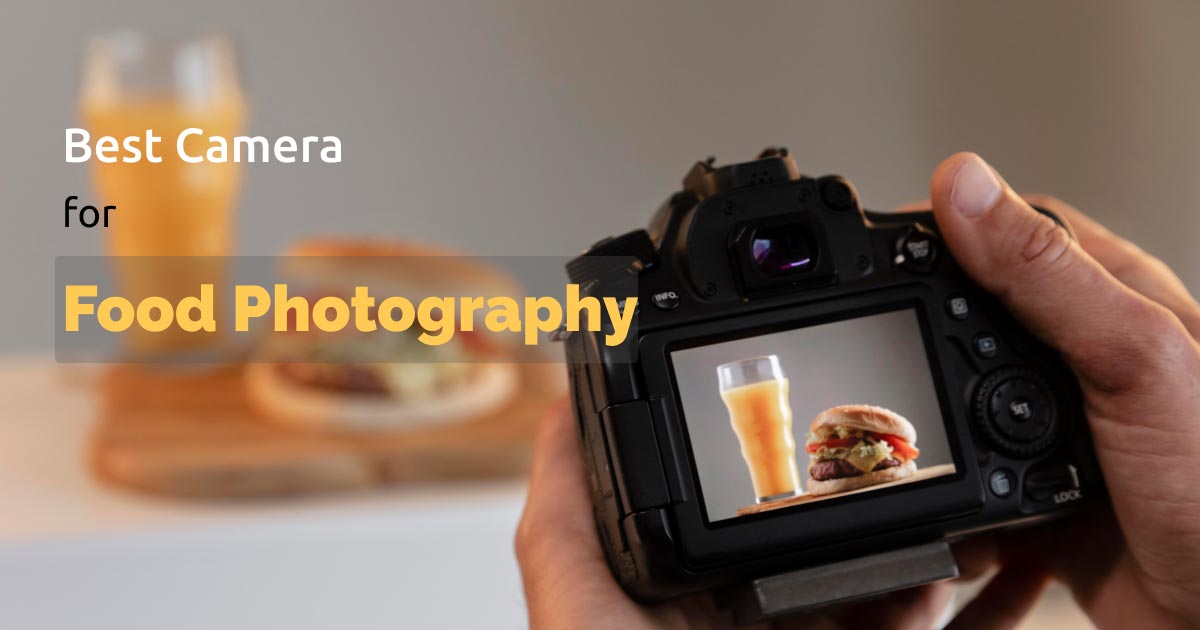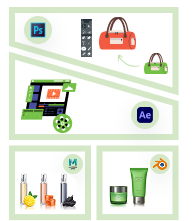Are you craving to find the best camera for food photography?
Don’t move away; you’re in the right place.
You might have a fancy food shop or restaurant and need to create a food menu card with images. In this case, you need to take crystal clear images with the best cameras. If you expect top-quality photographs, get some feature-rich cameras to shed light on your food photography. Also, shooting in the dimly lit kitchen requires an excellent low-light camera.
Whether you are a beginner or an expert at food photography, you always need the best cameras to deal with the photography.
What you’ll learn in this article
Do I Need a Camera for Food Photography?
You have a high-end device that can capture the moderate detail of every little thing. However, devices or smartphones have limitations. You may not get enough lighting or details from images with your handheld device.
If you want vibrant and detailed food photography, you want to have a DSLR. DSLR camera gives you complete control over different options such as setting focal length and changing the depth of field or aperture to make your own style.
Although smartphones can almost have and generate similar functionalities, they can’t generate the same things as DSLRs. Smartphone cameras have some lacking in detailed photography.
So, in this case, you should own a DSLR for food photography.
What are the Different Types of Cameras
Choosing the type of camera depends on a few factors. The kind of photography and the quality you expect for photography. Here are some camera types for ease of food photography.
Compact Digital Cameras
The significant advantage of compact cameras is the smaller size that can be carried in a bag or pocket. Also, compact cameras include a fixed lens and offer cost-saving and ideal functionalities for your food photography.
By using compact cameras, you don’t have to focus on the subject that much. These point-and-shoot cameras can capture the scenarios faster and better.
DSLR Cameras
You should consider getting a DSLR camera if you want to snap professional-level photographs. DSLRs are the most used cameras among many professionals. With the rugged body, quality shutter, and sensor functions with different ranges in pricing, DSLR cameras are the perfect choice for food photography.
One of the best features of DSLRs is that you can use different types of lenses for food photography, such as macro, fish eye, and wide-angle to telephoto lenses. You can easily use these lenses anytime in DSLRs.
Mirrorless Cameras
Mirrorless cameras capture images without the mirror in the camera body. Also, these cameras use electronic viewfinders to display the images. The all-over focus and metering provide enhanced vision through an electronic viewfinder.
These cameras are smaller and lighter with no quality compromise than DSLR cameras, like DSLRs. You can also use the lenses from other camera manufacturers.
Smartphone Camera
Smartphones have been a widespread choice for many photographers. The primary reason for choosing a smartphone is that it can easily carry the device and provides more flexibility than DSLRs.
Some better quality phones are iPhone, Android, and Google Pixel 4, which provide different effects to enhance your photos. But they don’t ensure the quality you expect from the DSLRs.
Which are the Best Cameras for Food Photography?
There are several quality cameras for food photography. If you step into food photography for the first time, it may seem difficult for you. We have gathered some of the best cameras for food photography for beginners or experts in the following.
1. Sony α7R IV
Sony α7R IV is one of the main cameras in Sony Corporation. The camera allows you to easily swap from video to photo mode, which is an excellent option for content creators. As you take food photos and videos, you need accurate details while capturing them.
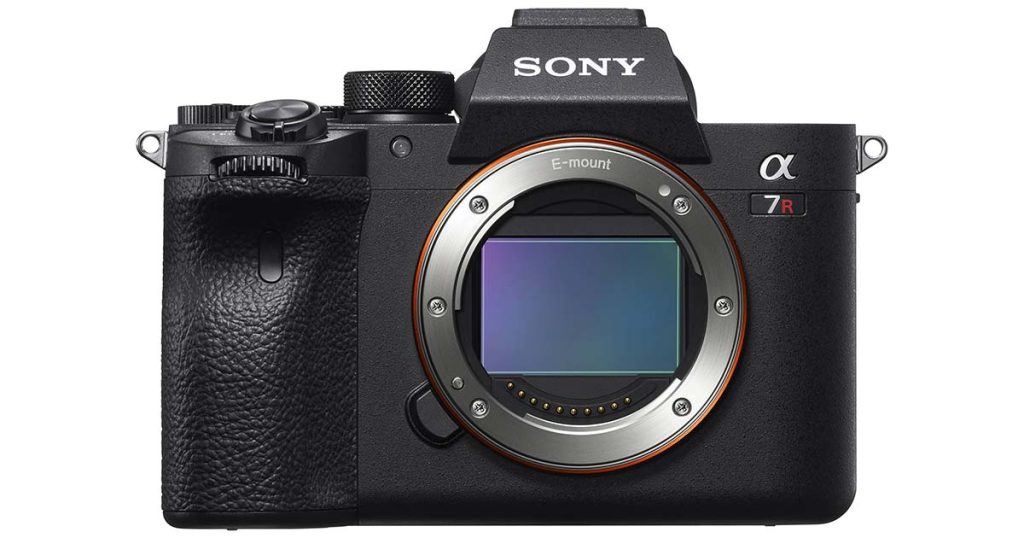
Sony’s whopping 61MP sensor and high ISO (50 – 102400) provide outstanding detail for your food capture. Despite the high-quality camera sensor, you can shoot at ten frames per second with Autofocus and capture 4K videos. The 16-shot high-resolution mode helps you generate even 240MP of static scenes.
Awesome, right? So, grab yours for food capture now!
Key Features
- Powerful and easy-to-use autofocus system
- Up to 10fps continuous shooting
- Instant Hybrid Autofocus
- Real-time tracking and Autofocus
- 15-stop dynamic range for accurate colors
- Electronic viewfinder with OLED true finder
- Wireless remote function for PC
| Pros | Cons |
| Amazing image quality with 61MP sensor | Costly Product |
| Low chances of Shutter lag | |
| Improved touchscreen LCD response | |
| Outstanding battery life |
2. Canon EOS 5D Mark IV
The surprising factor of Canon EOS 5D Mark IV is the full-frame sensor and remarkable 30MP camera. As you’re at food photography, the 61 AF points with the 41-type sensors gain satisfaction for sharp and detailed images.
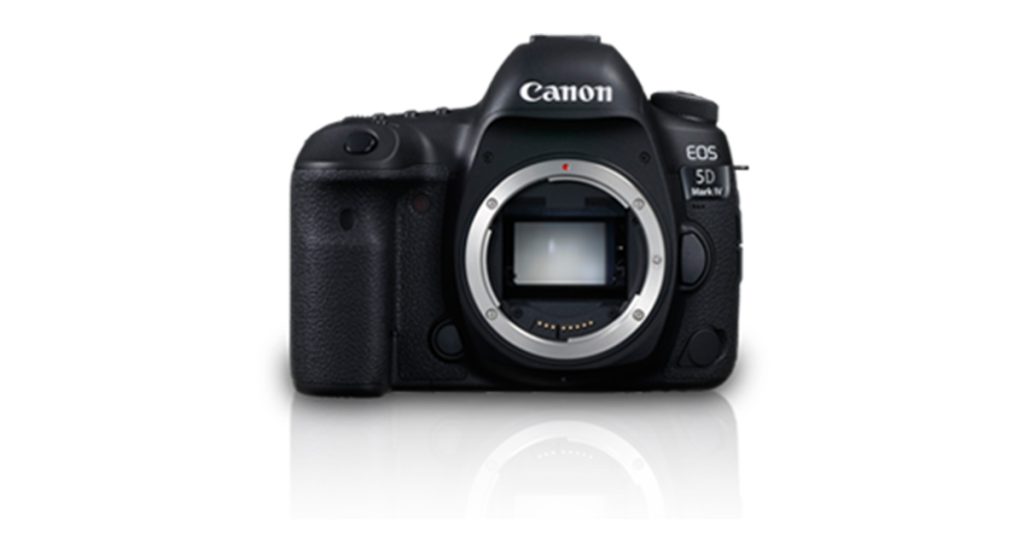
With the continuous shooting mode that can capture 7 frames per second, you can capture food preparation or instant action like splash photography. The 5D Mark IV includes raw technology so that you can color-correct the sharpness of your photos.
Key Features
- Built-in WiFi and GPS
- 4K Motion image capture
- Dual pixel CMOS autofocus
- LCD monitor includes a touchscreen interface
- Turn your camera to a high-quality webcam
- Built-in NFC technology
| Pros | Cons |
| Good and RAW image files | Provides low contrast during low-light |
| Amazing AutofocusAutofocus with JPEG buffer | |
| Offers minor adjustments for post-production | |
| Precise, accurate viewfinder with good battery life | |
| High ISO and color accuracy |
3. Panasonic Lumix S1R
If you’re looking for something low-cost compared to Sony and effective for your photography, here’s the Panasonic Lumix S1R. This camera provides almost identical functionalities to the Sony α7R IV as it lets you capture 187MP high-resolution photographs with its 47.3 MP full-frame MOS sensor.
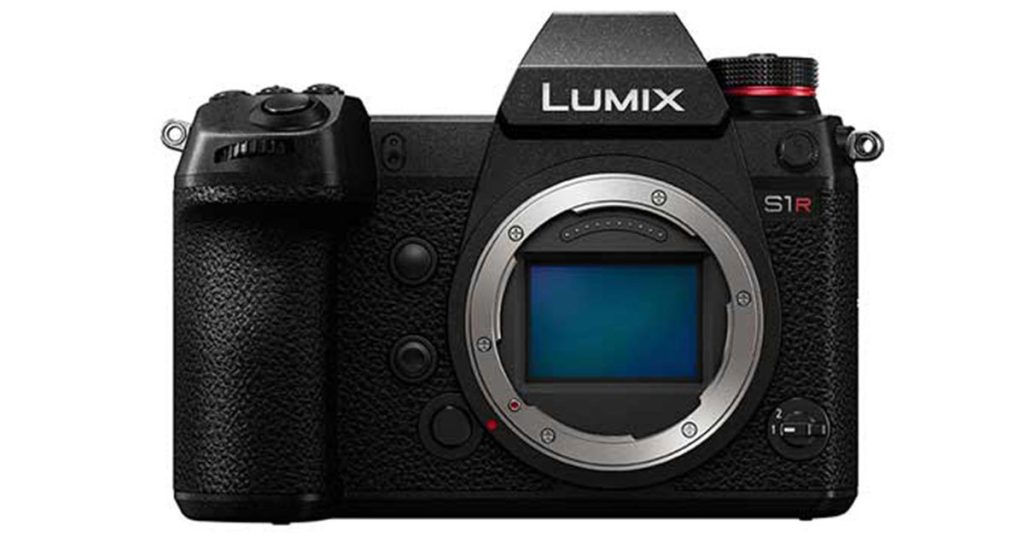
The high sensitivity of 25600 provides detailed photographs for your food photography. Take high-resolution photos with motion correction capabilities with an OLED eye viewfinder.
So, grab yours now!
Key Features
- 4K video up to 60P/50P
- 4K Motion image capture
- 760K-dot High-resolution OLED viewfinder
- LCD monitor includes a touchscreen interface
- Venus engine provides the finest capture
- JPEG, RAW image file format
| Pros | Cons |
| Mirrorless Rugged Design | Limited Lens system |
| Durable and Intuitive Control | |
| Well-balanced and large diameter | |
| Advanced Control Technology | |
| Splash and Dust Resistant |
4. Fujifilm X-T30
Finding cost-saving cameras? Here’s it.
The Fujifilm X-T30 is a prominent camera gadget for photography. The face detection and AF for moving subjects are so precise that you can easily capture motion or action images or videos. You can capture the details even in low light with its improved technology.
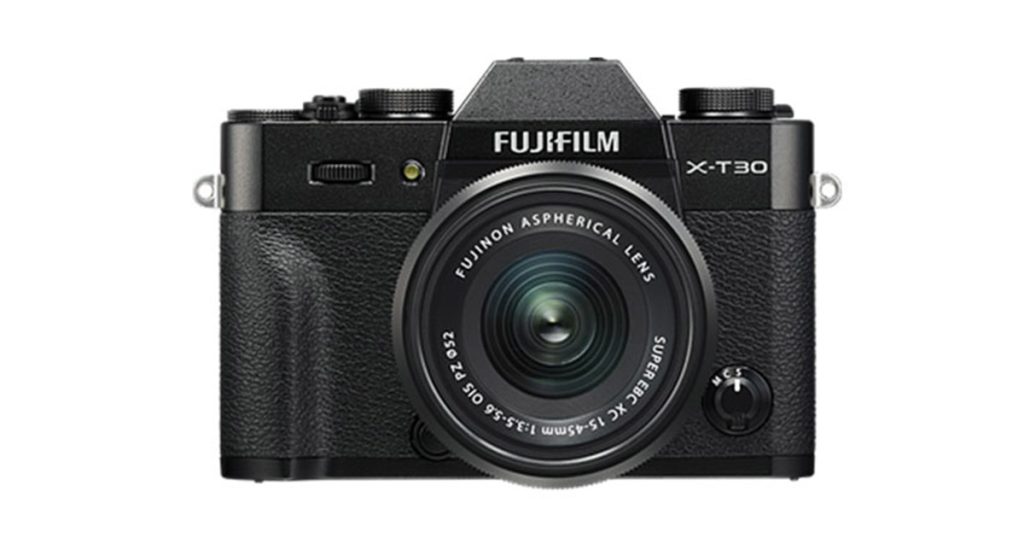
Capture slow-motion effects with 4K or 1080p with 120FPS, giving you awesome image or video capturing capability. The 2-way tilting and developed touch screen provide efficient capture for faster operation.
Key Features
- 4K video with a wide-angle lens
- The X-Processor 4-Quad core
- 26.1MP APS-C X-trans CMOS 4 Sensor
- 10-bit video recording with the 51200 ISO
- Mirrorless Camera
| Pros | Cons |
| Precise AutofocusAutofocus & excellent image quality | Gripping is not standard |
| Rugged Build and value for money | |
| Contemporary exposure controls | |
| Great 4K video & effective autofocus |
5. Nikon Z7 II
Nikon Z7 II is a mirrorless camera that features a 45MP sensor, and this is perfect for taking images with great detail. You can even shoot in low light conditions with high ISO performance and high-resolution capture.
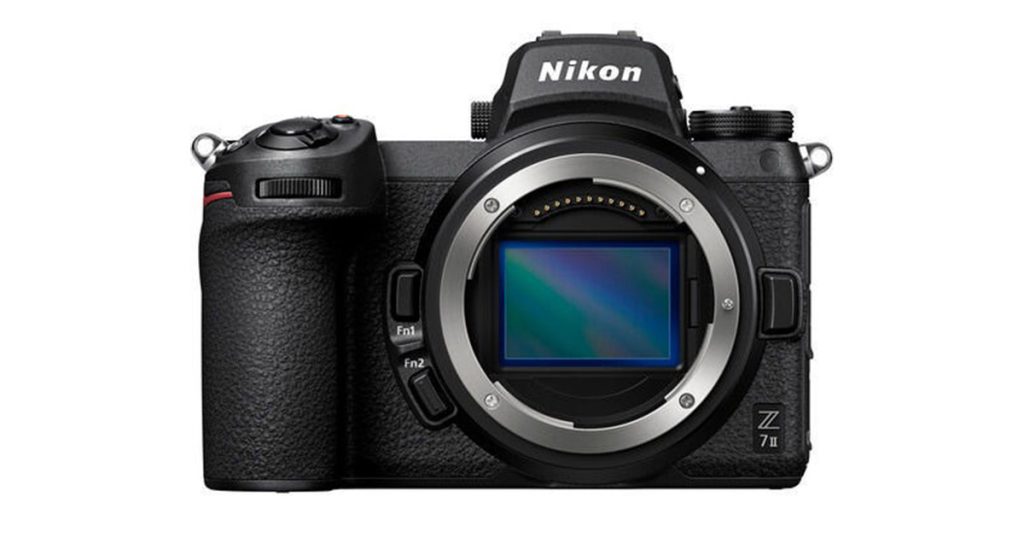
With Z mount that offers 18 top-notch lenses, you can work on the range of F-Mount lenses. Also, the 10-frame-per-second continuous shooting provides motion images and video capture for food preparation.
Key Features
- The 493-Point phase-detect AF system
- Dual card slots
- Vertical grip action for more power
- 45.7MP for detail capturing
- 4K UHD 60p Video Capture
- USB-C constant power or charging
| Pros | Cons |
| Great AutofocusAutofocus and Rugged Build | FP control and subject tracking need improvement |
| Professional and competitive quality images | |
| Best USB-PD battery charging | |
| Great 4K video & effective autofocus |
6. Sony a6100
If you’re looking for a low-cost Sony camera that can provide stunning image quality for your food photography, here’s it. This camera provides fast hybrid AutofocusAutofocus, accuracy, and effective performance with contrast-detection technology.
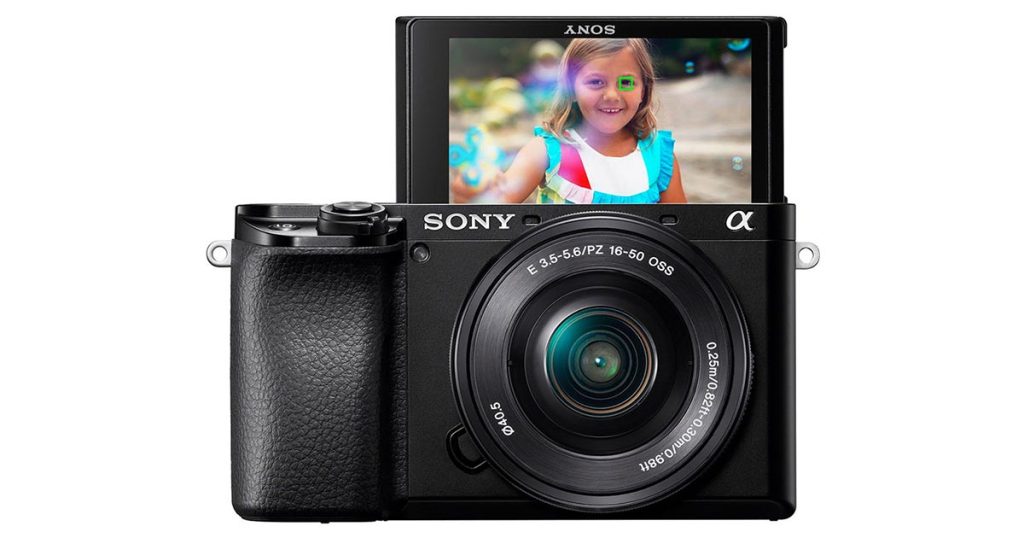
Capture the special moments with a 24.2MP APS-C Exmor Sensor and 51200 ISO. Capture the real-time autofocus tracking and real-time eye AF that provides smooth, rapid focus tracking of the subject.
Key Features
- External Microphone for quality recording
- Natural color reproduction
- Innovative subject recognition such as animals
- WiFi, NFC, or QR file transfer and remote control
- Broad 425-contrast detection AF points
| Pros | Cons |
| Great AutofocusAutofocus and Rugged Build | Tracking some types of animals doesn’t work |
| Lifelike Skin tone capture | |
| Real-time eye tracking for humans or animals | |
| Realistic and vibrant color production | |
| Flexible Low angle shooting |
7. Olympus OM-DE-M5 Mark III
Worried about contrast detection for food photography?
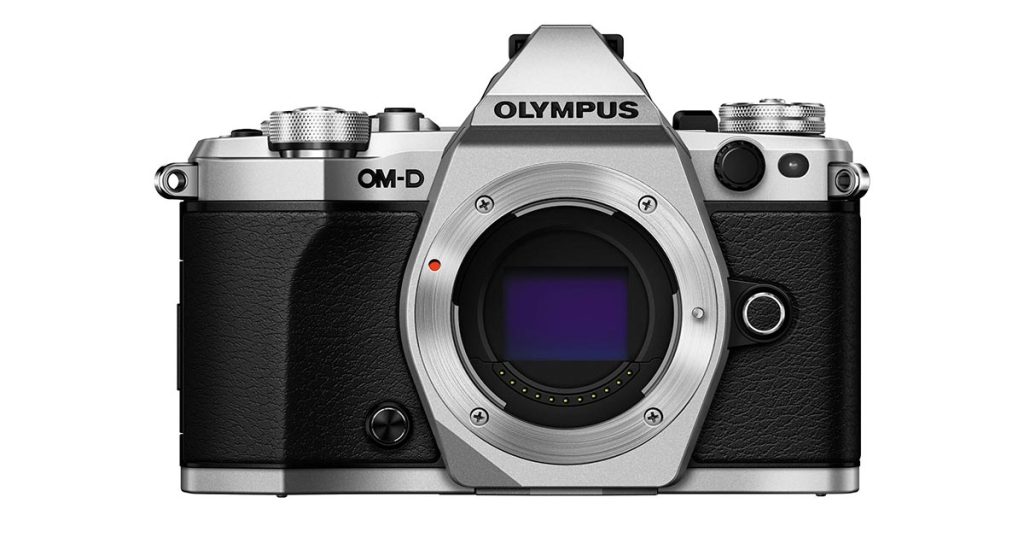
The Olympus OM-DE-M5 Mark III is the solution for your contrast-detection issue. For food photography, the 20MP live MOS sensor can capture every detail brilliantly; also camera’s 5-axis image stabilization provides powerful telephoto shots that bring out crisp photos.
Moreover, it ensures the built-in body stabilization that makes your shots ease while your camera shakes. WiFi and Bluetooth connectivity let you instantly share the images with your device.
Key Features
- 5-axis image stabilization
- 121-point hybrid autofocus phase detection
- 50MP high-resolution shot with the tripod
- Weather sealed Design
- Built-in camera USB charging
| Pros | Cons |
| Extensive Direct Controls | Lacks Battery life |
| Weather-Sealed Body | |
| Robust weather-sealed Build | |
| Built-in Stabilization |
8. Nikon D850
Want to have a DSLR over a mirrorless camera?
Nikon D850 provides a 45MP full-frame sensor, capable of providing dynamic range and taking low-light shots. The high ISO sensitivity provides 64 to 25600, and the seven frames per second continuous shooting provides motion capture.
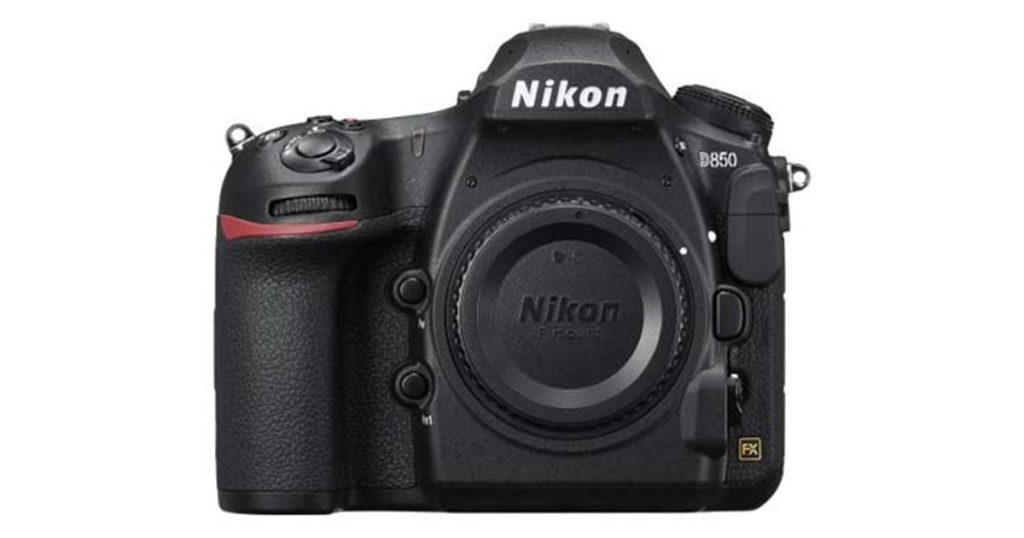
Also, the 153 autofocus points provide detailed images of moving subjects. Whether a beginner or an expert, you would love to own this camera. Battery life provides a power-saving feature that includes long battery life.
Key Features
- 45.7 MP Back-side CMOS sensor
- The dynamic range of ISO
- Expeed 5 processes the image quickly
- 153 focus points for high-resolution photo
- -4EV AF provides effective low-light capture
| Pros | Cons |
| Good Autofocus speed | No in-built flash |
| Improved Dynamic Range | |
| Easy setup and auto fine-tuning | |
| Illuminated buttons | |
| Perfect shutter operation |
9. Canon EOS Rebel T6i
If you want to save costs on a camera, prefer fewer features, and want a quality Canon lens, here’s the Canon EOS Rebel T6i. The 24.2 MP resolution and the Canon’s EF lenses can provide detailed and sharp images. Also, the mid-range ISO (100-12800) provides low-light photographs for food capture.
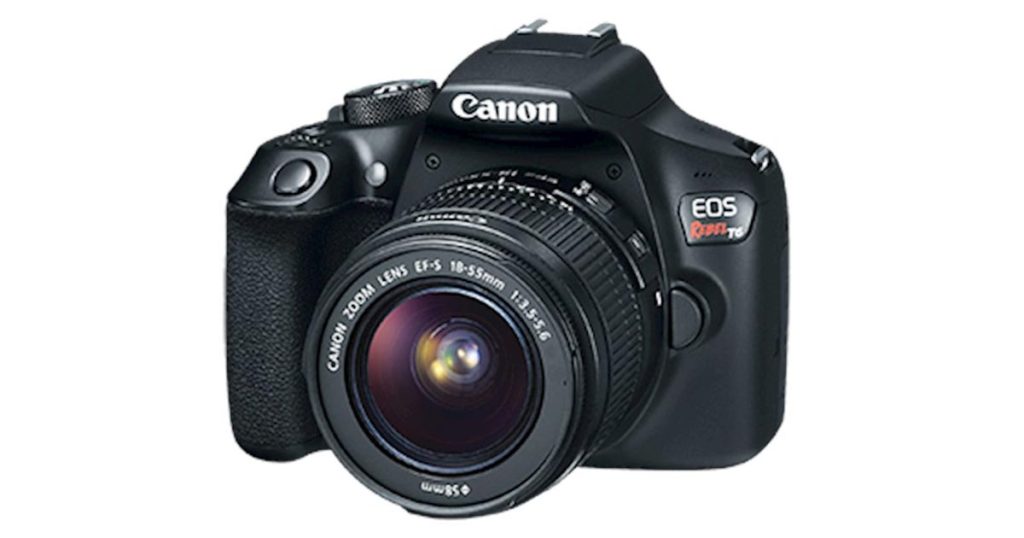
The 5fps continuous shooting speeds deliver a decent AF system with 19-cross type points for accurate focusing. The built-in WiFi lets you transfer the files to your phone or tablet for easy sharing on social media.
Key Features
- 24.2 MP CMOS sensor APS-C
- 19-point autofocus system
- WiFi, NFC file transfer mode
- 3-inch LCD articulating touchscreen
- Hybrid CMOS AF III focus system
- Flicker detection
| Pros | Cons |
| Instant response while shooting | Small viewfinder |
| High-quality image output | |
| Better dynamic range than older models | |
| Amazing color accuracy | |
| Perfect shutter operation |
10. Sony A7III
Our last but the quality Sony gear is here again.
This premium quality Sony camera captures your every moment of food photography with the 24.2MP CMOS sensor, and the BIONZ X image processing engine helps you capture the details of any scenario.
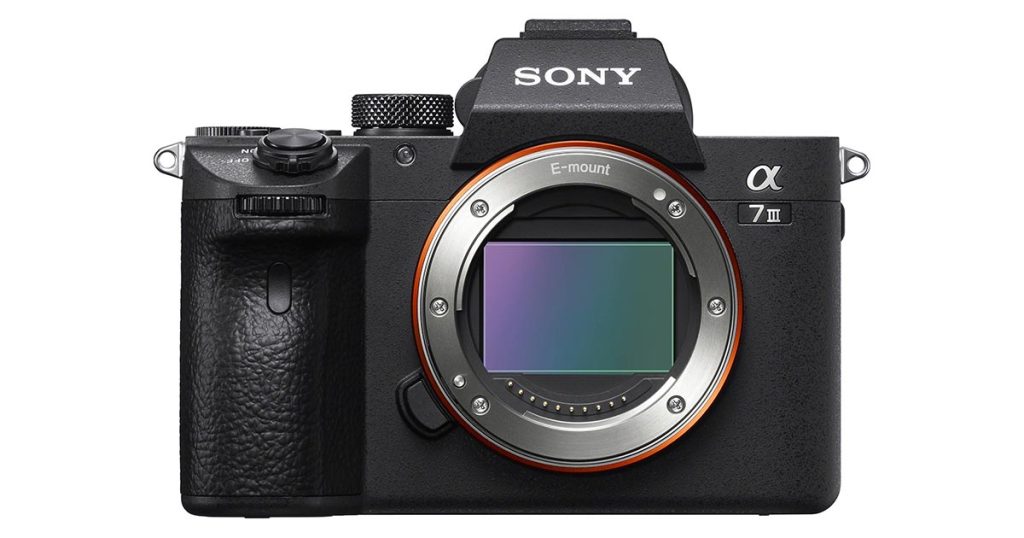
The 10fps silent and a mechanical shutter that includes AE/AF tracking let you capture motion shots and the 15-stop dynamic range provides accurate colors. The expandable ISO shot for still images is 50 to 204,800 if you want detail-oriented and noise-reduction technologies.
Key Features
- 24.2 MP full BSI-CMOS Sensor
- ISO 100 – 51200 and expandable
- 3-inch tilting screen
- 10fps continuous shooting
- 1080p recording at 12fps and 4K at 30fps
- 5-axis image stabilization with sensor-shift
| Pros | Cons |
| Automatic settings | Not weather resistant |
| High-quality image output | |
| Easy to carry & compact Design | |
| Amazing battery life |
Also Read: Best Camera Settings for Car Photography
How to Choose the Best Camera for Food Photography?
After all the discussion about the best digital camera for food photography, here are some key features and camera points you can consider reviewing.
Following are some of the best camera settings for food photography and recommendations.
1. High ISO
When shooting for food photography, perfect ISO becomes the main factor in capturing a more detailed photograph. ISO brings your image to more perfection and gains more light sensitivity. However, applying high ISO would reduce the quality of the image.
In this case, test the ISO before shooting to get the proper image output. If you want to edit the ISO settings, you can use Adobe Lightroom. But it won’t help you much to get the perfect ISO.
2. Focus Points
Focus points are one of the biggest concerns for your food blogging. Some photographers tend to choose the manual mode, while the autofocus mode is the perfect choice for you.
You may have troubleshooting scenarios while you set the focus on manual mode. Moreover, If you have a camera with few focus points, you won’t get the actual focus when you need it for your food photography.
3. File Size
We all know that file size matters most when considering the quality of the image. Make sure your camera can shoot quality resolution and generate pixels according to your expectations. At least have 3000 pixels for quality photography.
Most cameras can shoot raw images, which are digital negatives. Unlike the JPEG file format, you can edit the raw files countless times. Also, raw files hold more information and uncompressed quality for your post-processing work.
4. Size of the Sensor
The sensor’s size is one factor before you step out to food blogging. Sensor size affects the overall photography and defines the physical dimension of sensors. There are two different sizes of sensors in the market: cropped and full-frame.
Cropped sensors are much cheaper. A cropped sensor requires using smaller pixels to achieve the expected resolution. The final image gets low light sensitivity, and the image looks different. Cropped sensors are much cheaper, and that’s why this is widely available in digital cameras.
A full-frame sensor includes a 24mm x 36mm size and matches the traditional film camera; on the other hand, the cropped sensor has a smaller sensor size and doesn’t match most lenses, but still, cropped lenses can provide full-frame camera images.
So, decide which sensor you should go for!
5. Lens
The lens is one of the crucial factors for your food photography. Go for the dedicated macro lens for fine and detailed shots. Also, choose the camera that supports macro lenses. If you have a fixed-lens camera, you can choose close focusing one.
If you have enough budget, choose the 50mm prime lens and the highest aperture of f1.2, f1.4, f1.8, or f2.8, or choose 35mm f1.4 or f1.8. Consider having enough budget to choose the best camera lens for food photography.
6. Food Modes
Modern cameras include more features to make photography convenient for photographers. Smartphones and modern cameras include smart food modes that can help you to get quality images.
Use camera food mode to capture the images and highlight your dish. Food mode fine-tunes the color and changes your dish to look more appealing.
7. The Number of Megapixels
The number of pixels you need for your food photograph relies on the phototypes that will be taken. There are different pixel numbers for the web or images for the web. But your camera doesn’t have to be 50 megapixels for an accurate image for food photography.
For your information, you need at least a 2000-pixel wide image to post it online for faster loading. Also, one megapixel defines one million pixels, so count the pixels to set up your own number of pixels for your food photography.
Bonus (How to Take Perfect Pictures of Your Food) Tips
If you’re a beginner, concentrate on the intensity of lighting and adjust the lighting according to the surroundings. Let’s jump into the bonus tips for perfecting your food photography.
- Do not use the extra light overhead light or even built-in flash
- Move in different directions to take photos or get the best light source
- Move around the plate and from different angles, take the perfect shots
- Consider taking shots such as from above (pizza), side (burger), and angle (drinks) for the perfect shot
- Highlight the food other than the background
- Don’t zoom too much that food goes out of focus.
FAQ’s
How do I set up my camera for food photography?
If you have DLSR, you can easily set the camera settings for proper shutter, aperture, and ISO for food blogging. Set ISO 400 or more, aperture f/2.8, shutter speed 1/200 sec. You can still get the perfect camera shot without any expensive lenses and software.
How do you take good baked food photos?
For taking good baked food photos, consider capturing the texture, capturing the details of baked foods while increasing exposure, and shooting from different angles; if there are no colors in baked items, use a monochrome shot.
What should I charge for food photography?
There are different pricing structures for food photographers. Beginner charges hourly $35 to $75, professionals $150 to $500, top photographers $500, and more.
Is Nikon or Canon better for food photography?
It’s all your preference. Canon might have edges for better color quality, and Nikon also goes head-to-head with Canon cameras. So, it’s all your choice to go for the perfect one.
What lens do you use for food photography?
There are different zoom lenses for photography, but for food photography, the recommendation for a camera lens is 24-75mm f2.8 or 24-105mm f4 are perfect choices with the macro functionality.
How many megapixels do I need for food photography?
You don’t always need over 50 megapixels camera for food photography. But choose 24 megapixels and over for quality capture. Also, focus on the shutter, aperture, and focus point for an accurate photograph.
Is a macro lens good for food photography?
Macro lenses are very productive when you need to capture detailed photographs. For detail and close shots for your food blogging, macro lenses are beneficial.
Final Words
We hope we’ve provided you with valuable information about the best camera for food photography. There are lots of excellent cameras out there for you to capture incredible scenarios. Consider the key features of your preferred camera before purchasing one.
Whether you choose the best digital camera for food photography or DSLRs, consider their features and the accuracy in capturing detailed shots.
